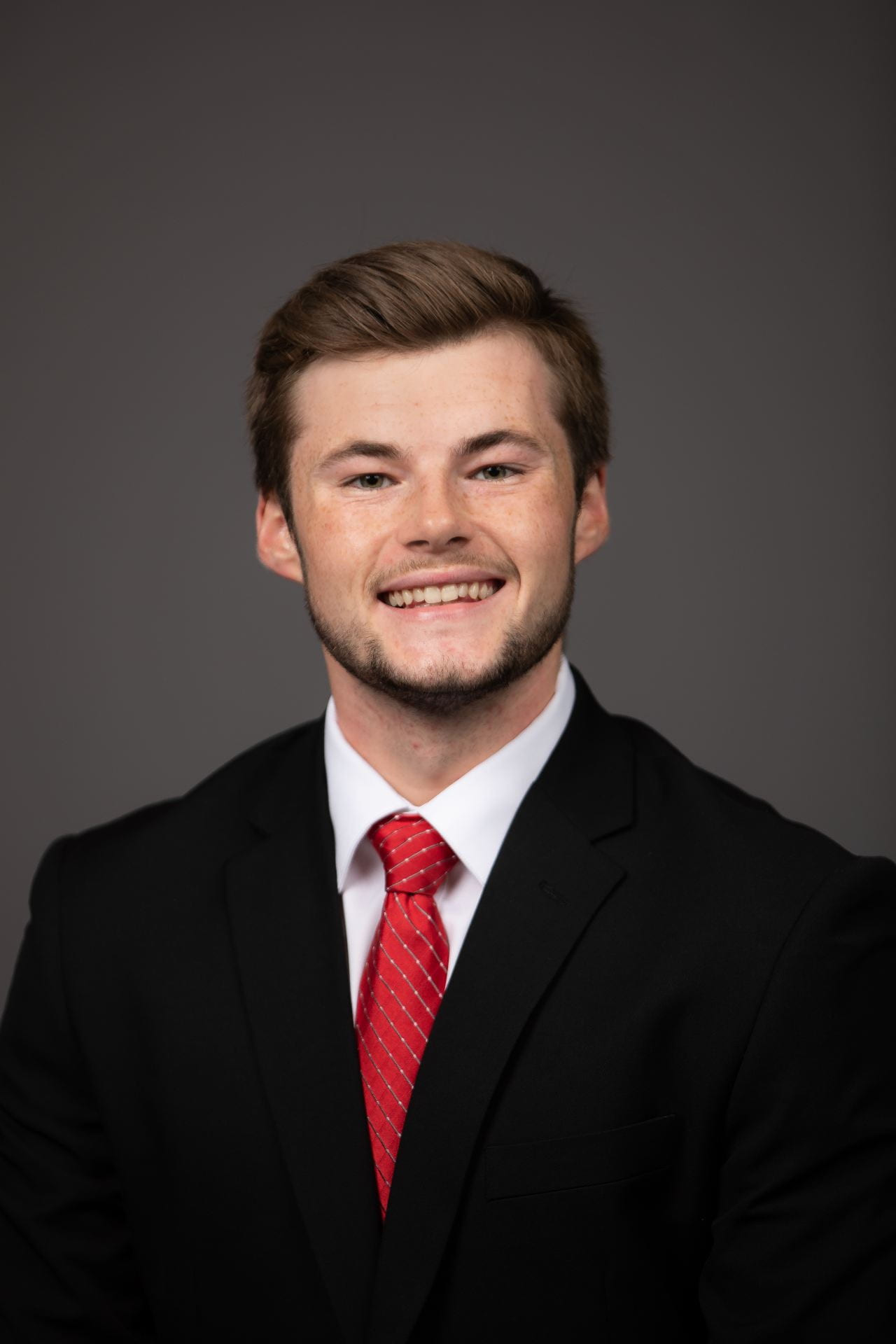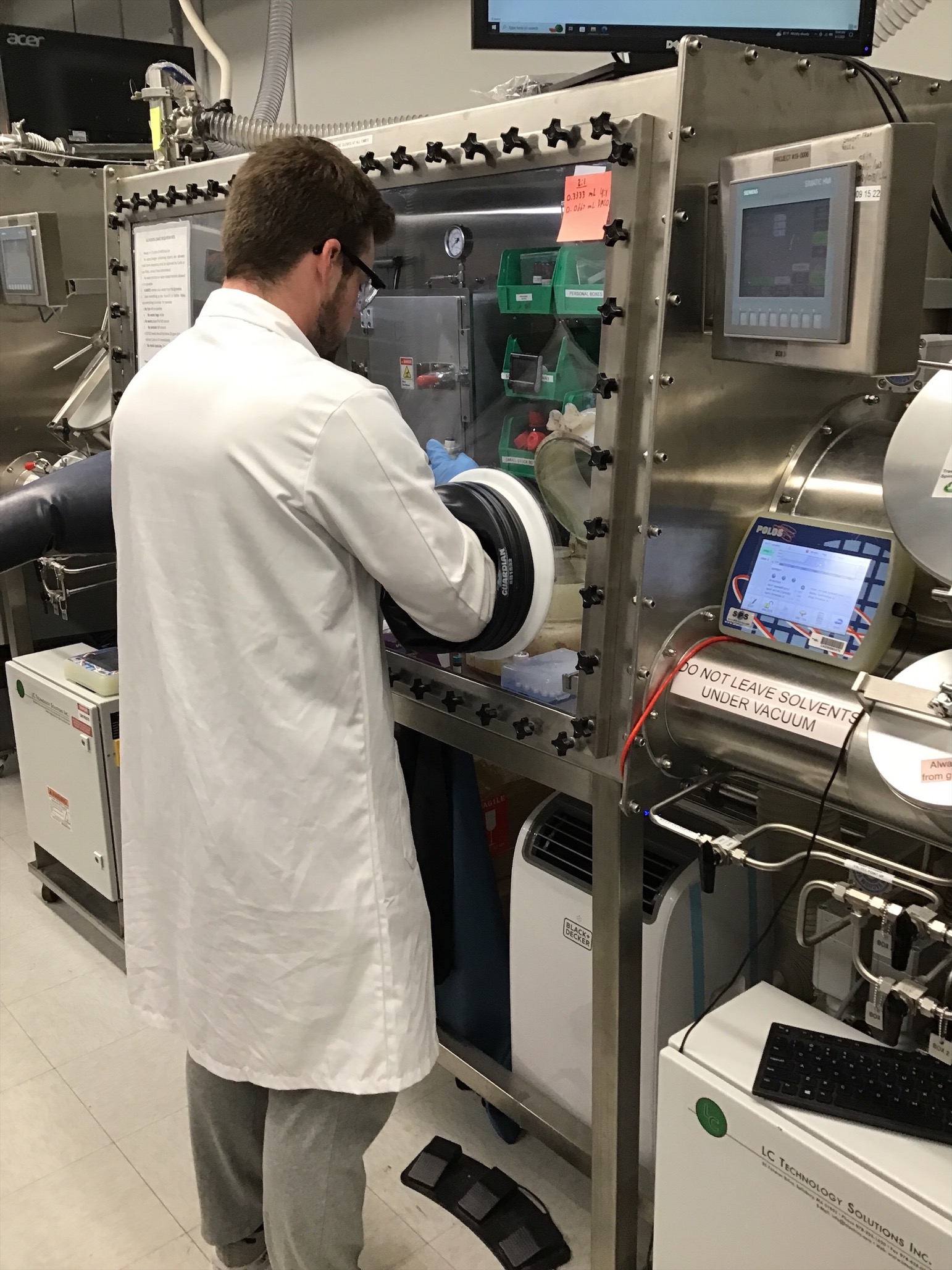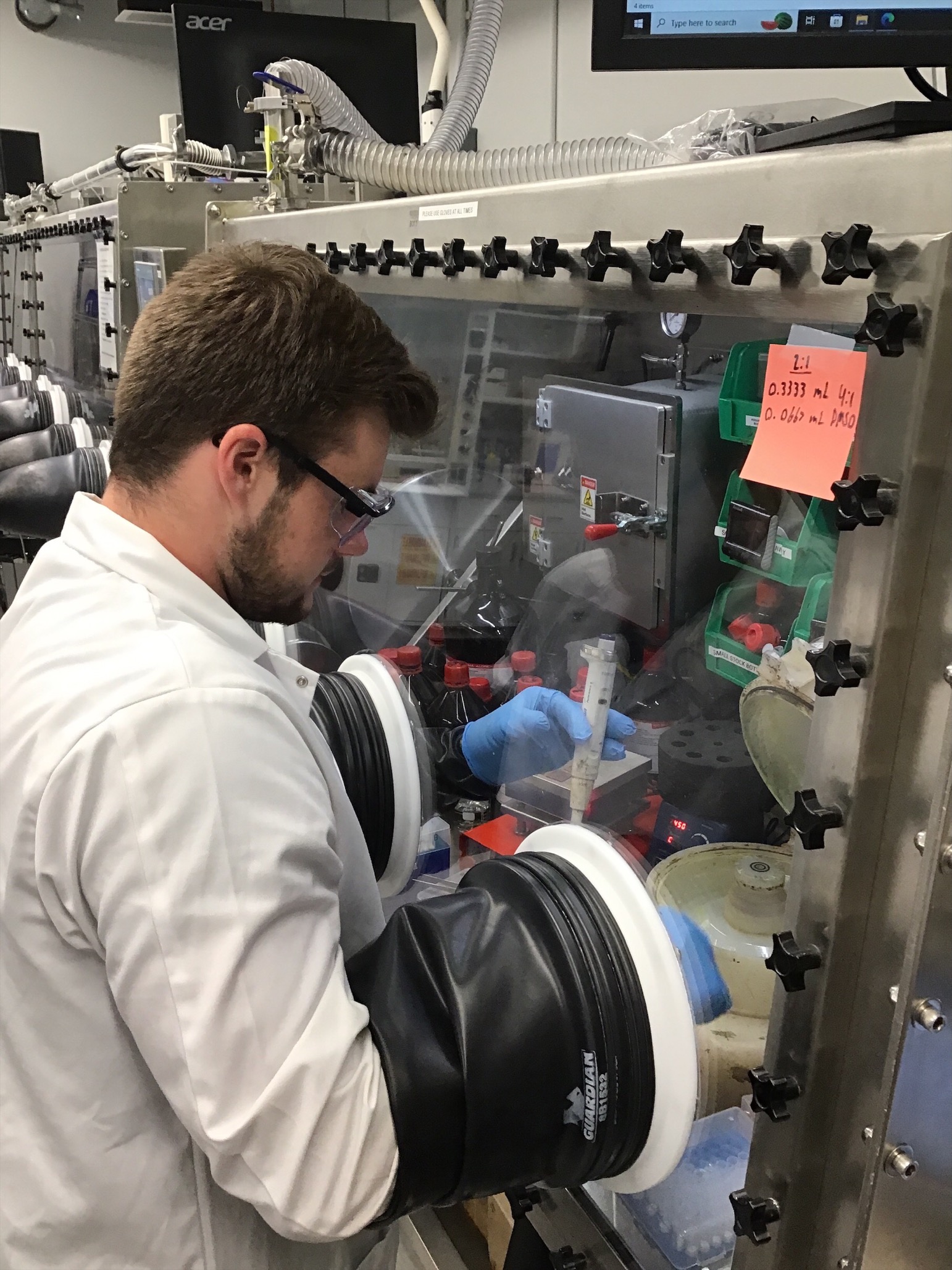Austin Shoemaker is a 3rd-year Chemistry major and Materials Science and Engineering minor studying solar cells with Dr. Juan-Pablo Correa-Baena.

How long have you been an undergraduate researcher at Georgia Tech?
This will be my 4th official semester as an undergraduate researcher following a shortened orientation semester when I first joined my lab during the Fall of my first year.
How did you get involved with undergraduate research?
As part of my MSE minor, I enrolled in MSE 2001 my first semester at Tech. During lecture, my professor, Dr. Juan-Pablo Correa-Baena, shared his research with the class, and it really piqued my interest. After class I read more into his work with the Energy Materials Lab and later wrote an email expressing my interest in joining. In response to my email, I was grateful to be offered an interview with one of the lab’s new PhD students, Diana LaFollette. After our meeting, I was fortunate enough to be offered a position in the lab as Diana’s undergrad, where I have worked since.

What are you working on?
Our lab works to improve the phase stability of lead halide perovskite (LHP) solar cells, and my personal project is focused on the positive effects of vacuum annealing and solvent engineering. LHPs have achieved a lot of recent progress in an effort to replace traditional solar cells because of their improved efficiency and energy costs. However, LHPs face a lot of challenges limiting their long-term phase stability and thus also their potential commercialization such as moisture and oxygen that cause strong phase degradation. An LHP is a photoactive crystal structure formed when precursor powders dissolved in specifically-modified solvent ratios are combined, spincoated onto a glass substrate, and heat annealed. Annealing is required to drive off remaining solvent to promote crystallization and is typically performed using a hot plate. However, the practice of vacuum annealing, which uses an ambient temperature vacuum chamber instead, has shown promising benefits for crystal phase stability, and has become the chief focus of my work.
What is your favorite thing about research/researching?
My favorite aspect of undergraduate research is the ability to work and collaborate with a bright group of people with whom I share a unique goal and focus. I really enjoy learning new concepts with my classmates in our various courses, but research offers a completely different mode of exploration. While it can certainly sometimes lead to frustration, what makes research so interesting is the fact that there are no right answers. In contrast to a typical course in which all solutions are predetermined by the instructor, each new research project opens the door to new unknowns to which there might be no solution. This element of discovery is what allows us to grow our skills as scientists and work with others to problem solve, and is what makes meaningful conclusions so rewarding.

What are your future plans and how has research influenced them?
My future career path is focused on earning a PhD in materials science. While friends and family tell me I am crazy for wanting to take more school, it is by going this direction I will be able to further pursue research, which is what I truly enjoy and where I envision myself long in the future. Although I am not exactly certain in which area of MSE I might always be working, my undergraduate experience has made me confident in my ability to grow, adapt, and contribute to any project. Furthermore, my time researching at Tech has shown me the amazing things research has to offer, and the strong positive impact it can have on this world. From my work on solar cells, I have developed a passion for renewable energy, and hope to continue to contribute to the field both in grad school and beyond.
